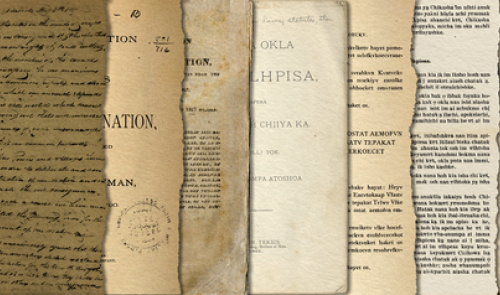Tribal Constitutions Project

The Sovereignty Project collaborates with Northwestern Professor of Law Erin Delaney and Northwestern Assistant Professor of Sociology Beth Redbird on the Tribal Constitutions Project, which is supported by the National Science Foundation. The Tribal Constitutions Project examines the evolution of tribal sovereignty through constitutionalization. The project has access to over one thousand tribal constitutions—including original documents and subsequent amendments—that span a 150-year period. These constitutions draw from over three hundred tribal nations.
Sovereignty Project students work with Delaney and Redbird to code each constitution and draw comparisons across tribal nations. Such comparative analysis reveals a series of themes in the development of tribal sovereignty.
First, the project considers the colonial origins of tribal constitutionalization. Many tribes adopted constitutions following the passage of the Indian Reorganization Act in 1934, a Congressional statute that began a series of reforms of federal Indian policy during the New Deal. While the IRA encouraged tribes to adopt constitutions through appropriations, the scholarly literature on IRA constitutions is unclear and often contradictory about the intentions of the federal government in enacting this legislation. Thus, the project aims to better understand the origins of these constitutions and their ultimate relationship with federal authority.
Second, the project seeks to understand the development of tribal citizenship. Tribal sovereignty includes the right of a tribe to define its citizenship; however, membership requirements have been heavily influenced by the imposed racial constructs of “blood quantum,” which were designed to reduce tribal enrollment and, in the process, create more available reservation lands for white settlement. The project traces evolving definitions of tribal citizenship.
Finally, the project examines the different ways legislative power is constructed in tribal constitutions. The structuring of legislative authority varies significantly across tribal communities. In some cases, legislative authority lies with all tribal members, while in others it lies with delegated representatives. Often tribal legislation can be structured through tribal councils or delegated to subject-matter specific committees. The project will assess the impact different structures of legislative authority have had on the expansion, as well as diminution, of tribal sovereignty.
When coding is complete, the database will be publicly accessible and searchable, and the codes and findings will be accessible to tribal leaders to help them explore how other tribes are addressing a variety of shared issues. In addition, the team will create an interactive data-visualization tool to allow policy makers and stakeholders opportunities to examine the data in depth.

